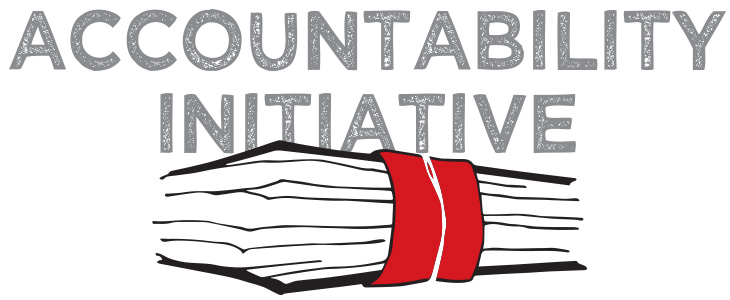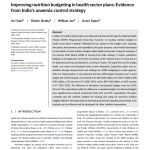
The Public Distribution System in India: Chhattisgarh to serve as a model state?
16 September 2014
The Public Distribution System (PDS) in India is one of the most important food security programmes subsidizing foodgrains for the poor, guaranteeing remunerative prices to farmers and helping cope with exigent situations such as floods, drought etc. Over the years, however, the PDS has come under much criticism owing to problems in implementation. This blog seeks to look at some of the problems faced by the PDS in the country and thereafter takes the case of Chhattisgarh – which is often termed a “model state” for PDS implementation – to see how these problems have been addressed.
Over the years, the PDS has not been able to yield desired benefits and has been criticized for numerous issues. These include errors of exclusion (poor households being left out) and inclusion (non-poor households being included) denying targeted beneficiaries of their entitlement, the leakage and diversion of foodgrains because of collusion between persons involved in the PDS supply chain, flawed system of appointment of FPS dealers, lack of an effective monitoring system or a weak vigilance machinery at the grassroots level, inferior quality foodgrains being distributed by the ration shops, creation of bogus cards and black marketeering of foodgrains and a general absence of transparency and accountability in implementation of the programme (for further details, see Khera, 2011; Himanshu and Sen, 2011). Responding to these critiques, some state governments have taken important initiatives to improve the PDS. These include changes in grain entitlements (for example in Tamil Nadu and Andhra Pradesh), universalisation of the PDS (Tamil Nadu and Himachal Pradesh), expansion in coverage (Andhra Pradesh, Chhattisgarh and Rajasthan) and implementing a better monitoring system (Chhattisgarh and Tamil Nadu) (Rahman, 2014).
One of the most important innovations in recent times has been in Chhattisgarh which has managed to convert PDS into a model-scheme in the state. In 2004, the newly elected Chhattisgarh government introduced the Chhattisgarh Public Distribution System (Control) Order, 2004 leading to a number of reforms to the PDS delivery and procurement system.
(A summary of the reforms are given in Table 1)
Table 1: Reforms undertaken in PDS in Chhattisgarh between 2000 and 2009-10.
| Year | Reform | Description |
| 2004 | Public Distribution System (Control) Order 2004 | De-privatised FPSs and instituted a number of transparency/auditing mechanisms for foodgrain distribution. |
| Passed in December 2004. | ||
| De-privatisation implemented starting September 2005 after legal challenge. | ||
| 2007 | List price reduction | Offered PDS foodgrain below the Central Issue Price. |
| 2007 | Mukhyamantri Khadyann Sahayata Yojana
|
Increased the number of people entitled to the most preferential PDS subsidies |
Source: PDS articles in The Times of India and The Hindu between 1998 and 2011.
(Krishnamurthy, Pathania, & Tandon, 2014)
The reforms initiated allowed for the implementation of a number of measures to be undertaken leading to improvements in the implementation of the scheme itself. These measures included:
a) Increasing Ownership: By transfer of all fair price shops to the Gram Panchayats, cooperative societies, self-help groups and forest protection committees. This led to an increase in transparency and accountability as the FPSs were now being run by people from the villages themselves.
b) Improving Targeting: by getting foodgrains delivered to the FPSs directly, thereby eliminating the middlemen and lowering chances of pilferage from the system,
c) Improvements in Monitoring: Making government trucks carrying PDS ration easily distinguishable by painting them yellow,
d) Strengthening vigilance systems at the grassroots by making people take part in increasing accountability by using methods such as publishing of all records in the public domain, social audits, etc. 1.
e) Increasing coverage: In 2007, the government launched the Mukhyamantri Khadyann Sahayata Yojana (MKSY) under which an additional 1.9 million households (who had been excluded from the 2002 BPL survey because of the Planning Commission cap on poverty numbers) were added to the 1.33 million households already receiving subsidized foodgrains from the central government at that time. This state-led initiative helped Chhattisgarh PDS increase coverage to approximately 80% of the rural population, which in turn helped reduce exclusion errors (Puri, 2012).
f) Introducing CORE PDS: based on the latest technology, this scheme has been running successfully in Raipur and is now being scaled-up. Under CORE PDS, beneficiaries can swipe their smart cards and take ration from any shop in their city (as they are all linked by satellite now), also reducing pilferage since the system is now electronically monitored where the government can instantly match the amount dispatched with the stock received by the shops alongwith knowing how much of this stock received was sold to the card holders 2.
g) Finally, a number of measure were undertaken to improve transparency and accountability: These are listed below:-
i) Increasing commission rates paid to the shop owners from Rs. 8 to Rs. 30 per quintal of rice and providing interest-free loans to shop owners, thereby lowering the FPS owner’s incentive to cheat and indulge in black marketeering of grains. According to Reetika Khera, only about 10% of the FPSs in Chhattisgarh reported food either going missing or being stolen in 2009-10 while this number is as high as 60% in Uttar Pradesh 3.
ii) Making use of electronic weighing scales mandatory in all FPSs.
iii) The government started conducting verification drives to identify and cancel bogus ration cards.
iv) Setting up of watchdog committees at the local level to increase accountability.
v) Introduction of technology – sending out SMSs when the goods leave the godowns, getting trucks carrying the rations fitted with GPS so that they can be tracked and monitored by anyone.
These measures have led to an increase in transparency and accountability to a significant extent. For instance, in a survey conducted in 12 randomly selected villages of districts Sarguja and Mahasamund of Chhattisgarh (as part of a larger survey conducted across nine states in India called the PDS survey 2011), 88.2% percent of the respondents expressed satisfaction with the way the PDS was functioning in the state (Puri, 2012).
The case of Chhattisgarh, therefore, shows how comprehensive and sustained reform measures together with a strong political will and effort from the civil society can improve the implementation of and access to any system (Krishnamurthy, Pathania, & Tandon, 2014). Moreover, it indicates that it can be done with minimal financial inputs. In fact, Chhattisgarh spends only about 4-5% of its budget on inexpensive food 3.
Given that a large number of grains never reach the intended beneficiary (according to an investigation by Bloomberg, approximately $14.5 billion worth of food has been siphoned off from the PDS in Uttar Pradesh alone in the past ten years 1), these small measures can go a long way in ensuring plugging leakages, preventing corruption and thereby reducing poverty and hunger. In fact, in a recent paper, the impact of the PDS on rural poverty has been proven statistically. According to data from NSS 2009-10, about 73% of rural households in Chhattisgarh were buying foodgrains from the PDS which would lead to a proportionate reduction by 39% in the “poverty-gap index” (a distribution-sensitive poverty measure) (using the all-India rural poverty line of Rs. 673 per person per month at 2009-10 prices) (Dreze & Khera, 2013).
The Chhattisgarh model of PDS has, thus, shown itself to be worthy of praise and deserves to be understood in detail so that it can be used as a lesson by the other states, if not emulated to the fullest.
Bibliography
2 http://www.business-standard.com/article/beyond-business/pds-gets-smart-112102800031_1.html
Dreze, J., & Khera, R. (2013, November 16). Rural Poverty and the Public Distribution System. Economic & Political Weekly .
Himanshu, & Sen, A. (2011). Why Not a Universal Food Security Legislation? Economic & Political Weekly , 46 (12).
Khera, R. (2011). Revival of the Public Distribution System: Evidence and Explanations. Economic & Political Weekly , XLVI (44 & 45).
Khera, R. (2011). Trends in Diversion of Grain from the Public Distribution System. Economic & Political Weekly , 46 (26).
Krishnamurthy, P., Pathania, V., & Tandon, S. (2014). Public Distribution System Reforms and Consumption in Chhattisgarh: A Comparatve Empirical Analysis. Economic & Political Weekly , XLIX (8), 74-81.
Puri, R. (2012). Reforming the Public Distribution Sytem: Lessons from Chhattisgarh. Economic and Political Weekly , XLVII (5).
Rahman, A. (2014). Revival of Rural Public Distribution System: Expansion and Outreach. Economic & Political Weekly , XLIX (20).





